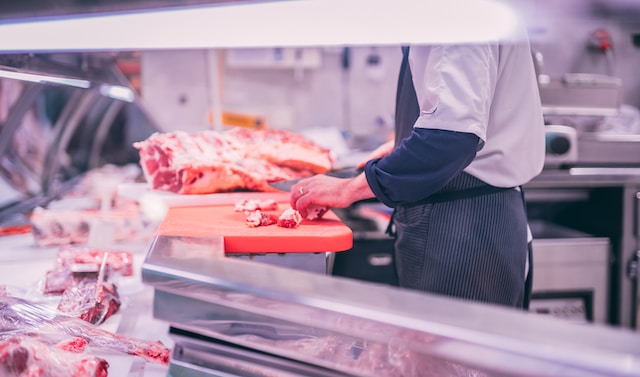
The art of meal planning can seem daunting, especially when you’re trying to stick to a tight budget. However, with some creativity and resourcefulness, you can meal plan cheaply and still come up with delicious and nutritious meals using. Here are some tips to help you make the most of your wallet and pantry:
Plan ahead
With meal planning, there is nothing more important than taking the time to plan ahead. This step is crucial in not only saving you money but also making the entire process of meal planning much easier and more efficient. If you’re new to meal planning, here are some tips to help you navigate the planning aspect with ease:
Set aside dedicated time: Find a time in your schedule when you can sit down and focus solely on meal planning. It could be a lazy Sunday afternoon or even a Thursday evening after work. The key is to choose a time when you are feeling relaxed and can give your undivided attention to the task at hand.
Take inventory of your pantry and fridge: Before you even think about writing your grocery list, take a thorough inventory of what you already have on hand. This ensures that you use up any ingredients that may be close to expiry and reduces the chances of buying duplicates. By building your meals around what you already have, you can significantly cut down on food waste and unnecessary spending.
Consider your schedule: Take a look at your upcoming week and consider your commitments and obligations. Are there any evenings where you know you’ll be short on time? Are there days when you’ll have more time to cook? By understanding your schedule, you can plan your meals accordingly. For busy nights, opt for quick and easy recipes or rely on leftovers. On nights when you have more time, challenge yourself with a new and exciting recipe.

Embrace variety: Variety is the spice of life, as they say. When meal planning, aim to incorporate a mix of different cuisines, flavors, and textures. This not only keeps your taste buds excited but it also helps to ensure you are getting a well-rounded and balanced diet. Experiment with different proteins, grains, and vegetables to keep your meals interesting and satisfying.
Keep it simple: While variety is important, so is simplicity. Don’t overwhelm yourself with overly complicated recipes or long ingredient lists. Stick to recipes that require minimal ingredients and cook times. Not only does this simplify the meal planning process, but it also decreases the chances of food going to waste.
With these simple tips, you’ll have a clear roadmap for this week’s meals, reducing the chances of last-minute takeout or impulse purchases.
Buy in bulk
Buying in bulk can be a game-changer if you want to meal plan cheaply. Not only does it save you money in the long run, but it also provides you with the convenience of having key ingredients readily available in your pantry. Let’s explore why bulk-buying is worth it and how you can make smart choices when it comes to food shopping.
Why Bulk Buying is Worth It
Cost Savings: Purchasing ingredients in bulk often means a lower price per unit. By buying larger quantities of pantry staples such as rice, beans, pasta, and spices, you can save a significant amount of money over time. This is particularly beneficial if you frequently use these ingredients in your cooking.
Reduced Packaging Waste: Buying in bulk is a more sustainable choice, as it minimizes the amount of packaging waste generated. Instead of purchasing multiple smaller packages, you can opt for a single larger package that contains the same amount of product, but with less packaging material.
Longevity: Many bulk items have a longer shelf life compared to their pre-packaged counterparts. This means you can stock up on essentials without worrying about them expiring too soon. By having a well-stocked pantry, you have the flexibility to whip up a variety of meals without constantly running to the store.
Tips for Smart Bulk Buying:
Make a List: Before venturing to the bulk section of your grocery store, make a list of the items you frequently use and would benefit from buying in larger quantities. Stick to your list to avoid unnecessary purchases and ensure you’re maximizing your savings.
Check Unit Prices: While buying in bulk is a lifesaver if you want to meal plan cheaply, it’s essential to compare prices on a per-unit basis. Sometimes, smaller packages or sale items may be cheaper than buying in bulk. Taking a few extra seconds to do the math can help you make the most cost-effective choice.
Consider Storage Space: Before loading up on bulk items, assess your available storage space at home. Ensure you have enough room to store larger quantities of ingredients without them going to waste. Invest in airtight containers or storage jars to keep your bulk purchases fresh and organized.
Share with Others: If you’re hesitant about buying bulk items due to limited storage space or concerns about consuming before the expiration date, consider splitting larger quantities with friends or family members. This way, you can all enjoy the cost savings without worrying about waste.
Diversify Your Choices: While pantry staples like rice and beans are common bulk purchases, don’t be afraid to explore new ingredients as well. Buying grains, nuts, seeds, or dried fruits in bulk can introduce variety into your meals, making them more exciting and nutritious.

Remember, it’s important to strike a balance between bulk buying and buying only what you need. Evaluate your consumption patterns and personal preferences to determine the quantities that work best for you. With a little planning and smart decision-making, bulk buying can be a valuable tool in your meal planning toolkit, helping you create affordable and delicious meals without compromising on quality.
Focus on vegetables:
One of the smartest strategies to meal plan cheaply is to focus on vegetables. Not only are vegetables incredibly versatile in the kitchen, but they are also highly nutritious, offering a range of vitamins, minerals, and antioxidants that are vital for maintaining good health.
Incorporating an abundance of vegetables into your meal planning not only helps stretch your budget, but it also provides numerous health benefits. Vegetables are low in calories, high in fiber, and packed with essential vitamins and minerals. By making vegetables the star of your meals, you can create satisfying and nourishing dishes that fill you up without breaking the bank.
Aim to include a colorful array of vegetables in your meal plan, as different vegetables offer different nutritional profiles. Mix and match leafy greens like spinach or kale with hearty vegetables like broccoli, carrots, and bell peppers. Add some depth of flavor with aromatic vegetables like onions and garlic, and don’t forget about the versatility of root vegetables like potatoes and sweet potatoes.
Plan meals on what’s available
One of the best ways to meal plan cheaply with vegetables is to look for produce that is in season and on sale. Seasonal vegetables tend to be more affordable and offer the freshest flavors. Plan your meals around what’s available and incorporate a variety of vegetables to keep your dishes interesting and flavorful.
Go for frozen or canned If fresh is not an option
Fresh produce may not always be budget-friendly, especially if you’re shopping during certain times of the year or in regions with limited access to fresh produce. In such cases, don’t hesitate to consider canned or frozen vegetables. These alternatives can be just as nutritious as fresh produce and often come at a lower price point. Canned vegetables have a long shelf life, making them convenient pantry staples for quick and easy meal preparation. On the other hand, frozen vegetables retain most of their nutrients and can be a great option for adding vegetables to soups, stews, and stir-fries when fresh is not readily available.
Use meat sparingly
One area where you can save a significant amount of money is by using meat sparingly. Meat tends to be one of the most expensive items on a grocery list, but that doesn’t mean you have to go without it entirely. By incorporating meat as a flavoring rather than the main event, you can still enjoy its taste while reducing your overall grocery bill. Here are some tips on how to achieve this:
Embrace vegetarian and plant-based meals: Vegetarian meals can be just as satisfying and flavorful as meat-based ones. Explore different cuisines that have a rich tradition of vegetarian recipes, such as Indian, Mediterranean, or Asian cuisine. Dishes like lentil curry, chickpea stew, or tofu stir-fry can be delicious and budget-friendly options that are packed with protein and other essential nutrients. Experiment with different spices and herbs to elevate the flavors of your vegetarian creations.
Opt for cheaper cuts of meat: When you do choose to incorporate meat into your meal plan, opt for cheaper cuts. These cuts may require slower cooking methods, but with a little bit of patience, they can yield incredibly tender and flavorful results.

Look for cuts like chicken thighs, beef chuck roast, or pork shoulder, as these tend to be more affordable compared to their premium counterparts. Slow cooking or marinating these cuts can help break down the tougher fibers and result in a melt-in-your-mouth texture.
Stretch the meat with vegetables and grains: Instead of having the meat be the focal point of your meal, use it as an accent or a complement to a larger portion of vegetables or grains. Make a stir-fry with a variety of colorful vegetables and add a small amount of thinly sliced beef or diced chicken for flavor. By increasing the proportion of vegetables and grains, you can not only save money but also increase the overall nutritional value of your meals.
Explore alternative protein sources: Meat doesn’t have to be the sole source of protein in your meals. There are plenty of affordable and nutritious alternatives to meat that you can incorporate into your meal planning. Beans, lentils, tofu, eggs, and canned fish are all great sources of protein that can be used as substitutes or complementary ingredients to meat. Experiment with different recipes and find what works best for you and your taste preferences.
Repurpose leftovers
Leftovers often get a bad rap, but with a little creativity and culinary know-how, they can be transformed into delicious meals that are even better than the original dish. Here are some tips on how to repurpose leftovers and make the most out of every last morsel:
Think outside the box: Just because you want to meal plan cheaply doesn’t mean you have to limit yourself to simply reheating leftovers. Instead, think of new ways to incorporate them into different dishes. Leftover roast chicken can be shredded and used in tacos or salads. Cooked vegetables can be pureed into soups or added to omelets for a nutritious twist. Embrace your culinary creativity and let your taste buds guide you.
Reinvent flavors: Take the flavors of your leftovers and give them a fresh spin. Add some spices or herbs to change the taste profile. If you have leftover spaghetti Bolognese, add some cumin and chili powder to transform it into a Mexican-inspired chili. By enhancing the flavors, you can create an entirely new dish that feels exciting and different.
Combine with fresh ingredients: Add fresh ingredients to your leftovers to elevate their flavors and textures. Fresh herbs, citrus zest, or a squeeze of lemon can brighten up a dish, while crunchy vegetables can add a satisfying texture. Don’t be afraid to experiment and play with flavors. The combination of leftover ingredients and fresh additions can lead to surprising and delicious results.

Transform into a different cuisine: Use your leftovers as a starting point to explore different cuisines. If you have leftover grilled chicken, you can repurpose it into a Thai-inspired stir-fry or a hearty Italian pasta dish. By infusing your leftovers with the flavors of a different cuisine, you can create a whole new dining experience.
Get saucy: A great sauce can take leftovers from ordinary to extraordinary. Whip up a quick homemade sauce or use a store-bought one to add depth and flavor to your leftovers. A tangy barbecue sauce can jazz up leftover pulled pork, while a creamy curry sauce can transform leftover roasted vegetables into a decadent curry. The possibilities are endless.
Get creative with carbs: Leftovers often pair well with various carb-based dishes. Consider turning them into comforting casseroles or filling for stuffed peppers. Leftover rice can be transformed into a flavorful fried rice, or mashed potatoes can be repurposed into crispy potato pancakes. By incorporating carbs, you not only stretch your leftovers but also create new and exciting meals.
Freeze for future use: If you find yourself with too many leftovers, consider freezing them for future use. Portion them out into individual servings and store them in airtight containers or freezer bags. This way, you’ll have ready-made meals for those days when you’re short on time or simply need a break from cooking.
Creativity, planning, and resourcefulness are crucial if you want to meal plan cheaply. With some simple strategies, you can make the most of your budget and create delicious, satisfying meals for you and your family. So roll up your sleeves, head to the supermarket, and get cooking!
